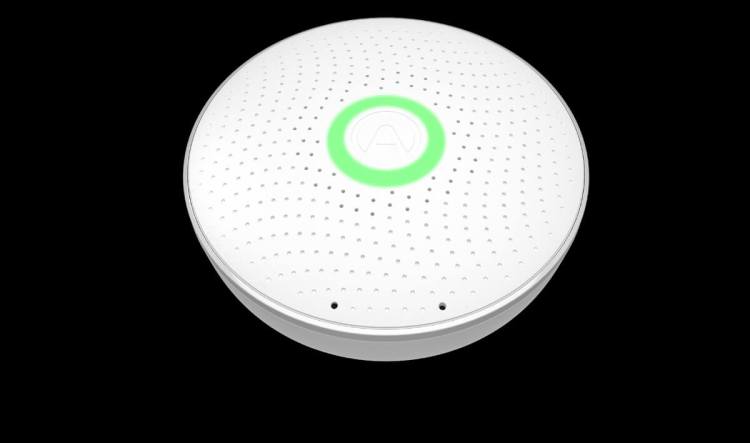Airthings is unveiling its Airthings Wave smart radon gas detector that detects the presence of the dangerous gas in your home in real time.
This product is one more example of the Internet of Things, or making everyday objects smart and connected. And if you’re going to use smart device detection in your home, you might as well start with one that identifies something as life-threatening as radon gas.
It comes at the pretty steep price of $200, but Airthings says it can give you peace of mind.
Airthings Wave gives homeowners instant visibility into their indoor levels of radon — a dangerous gas that few know is the leading cause of lung cancer among non-smokers. The announcement was made at CES 2017, the big tech trade show in Las Vegas this week.
“Every home should have a radon detector, and it’s our mission at Airthings to make that happen,” said Oyvind Birkenes, Airthings CEO, in a statement. “We’re seeing increased attention to radon exposure, thanks to initiatives from the EPA and legislation at the state level. These are encouraging developments and pave the way for Wave’s progressive technology to provide consumers with invaluable information and peace of mind that their homes are healthy for themselves and their families.”
Wave is available for preorder via the Airthings website. Product will begin shipping in early March 2017.
Radon exposure claims the lives of approximately 21,000 Americans each year, which is more than six times the number of deaths attributed annually to house fires and carbon monoxide poisoning combined. The dangerous gas is present in every home nationwide, to varying degrees — based on climate, ventilation levels, time of year, and a variety of other factors.
The most common type of radon test kit used today is based on charcoal canisters, which only provide short-term measurement (days) and require being sent to a lab for analysis. This is problematic, as radon levels fluctuate significantly over time. Airthings Wave changes the way radon is measured by using digital sensors and smart home technology. This allows for the unique combination of real-time radon level detection and long-term measurement.
Airthings’ mission is not only to make radon detection as ubiquitous as smoke detection, but to also make it simple and affordable for consumers to integrate the technology into their homes.
Close-range motion in front of the device activates a simple visual indicator light, which turns green (Good), yellow (Warning) or red (Danger) to alert users of their home’s air quality.
A corresponding real-time status is accessible via the app, which connects via Bluetooth and catalogues short- and long-term data for a one-year period, at daily, weekly, monthly, and annual increments.
We may be a long way from this, but I’m waiting for the day when every smoke detector can detect this kind of gas, as well as detecting allergens that are harmful to breathe.
Airthings Wave includes temperature and humidity sensors that provide the ultimate accuracy in radon readings by taking into account environmental factors. They also allow for early detection and notifications of potential mold concerns. In addition, customized tips are given to help improve overall air quality.
In addition to the intuitive color-coded visual cues, Wave will emit an audio alert when the device detects high radon levels or a low battery.
When Wave detects high radon levels for a period exceeding national guidelines (48 hours in the United States), the user will be notified and receive recommendations on how to reduce radon in their home.
Airthings Wave is fully battery-powered and does not require hard wiring. The two AA batteries required to power the device will provide users with approximately two years of use.


